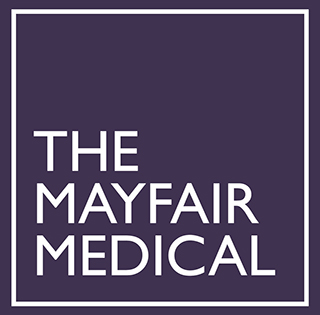Rhinoplasty(Nose Job) London
- Start from £5900
- 0% Finance Options Available
- Explore more more nose job results
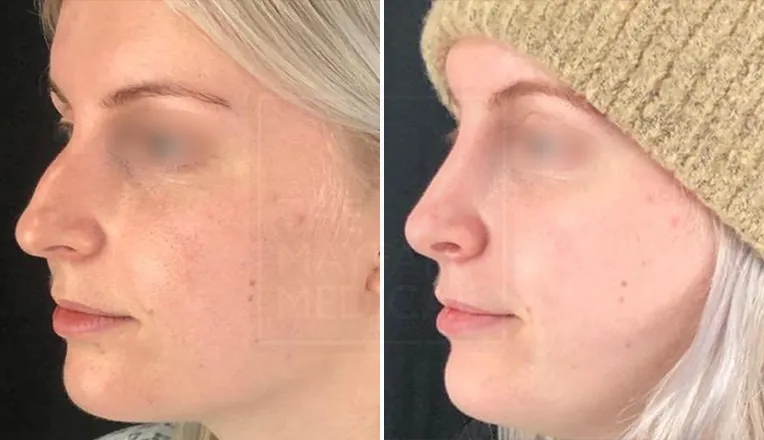
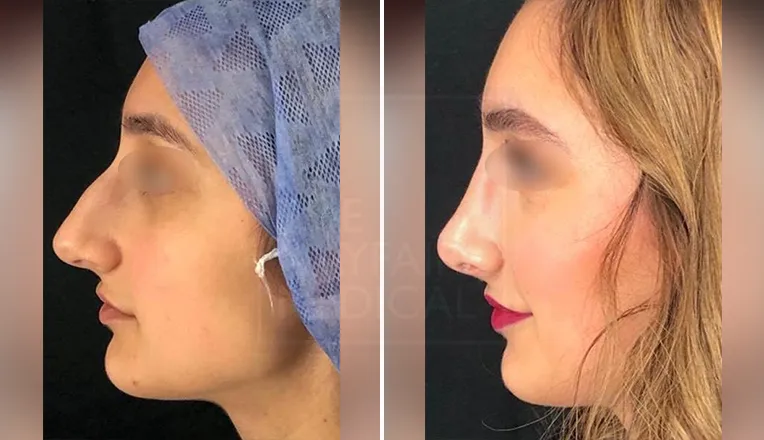
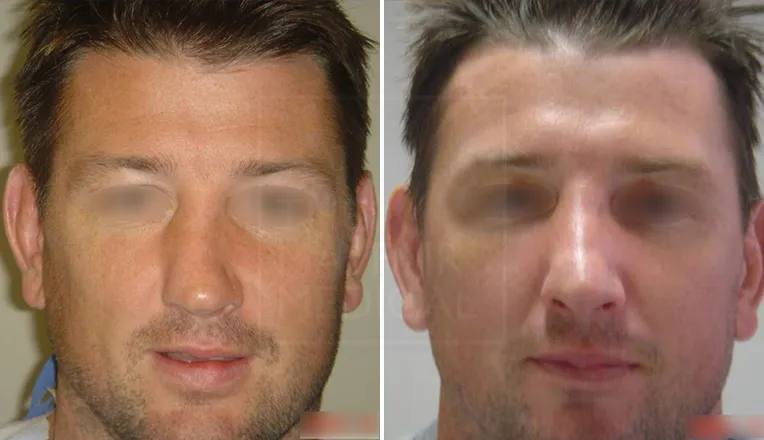
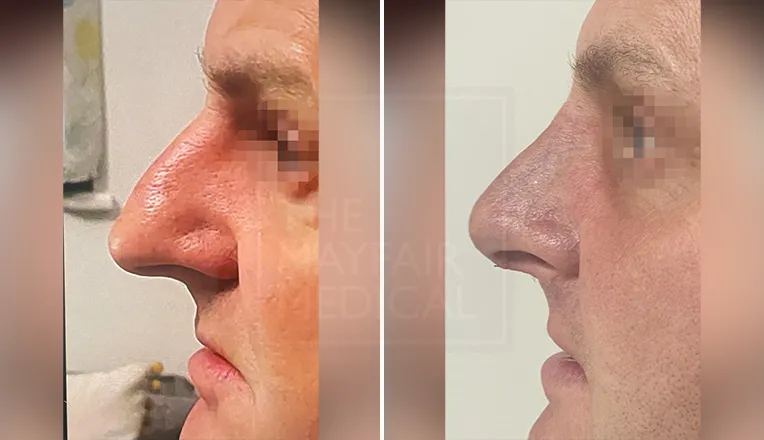
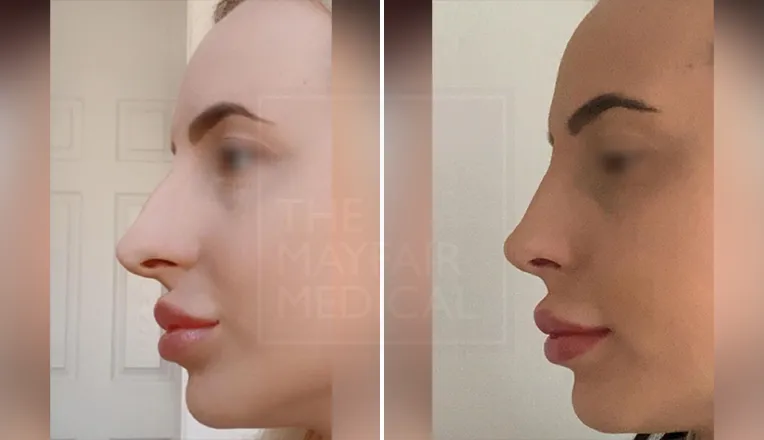
UK's top rated plastic surgeons
Highest standard of care & comfort
Interest free monthly payments

Last Reviewed June 28th 2023 | Last Updated: Aug 3, 2023
What is Rhinoplasty?
Rhinoplasty, also called “ nose job”, is a surgical procedure that aims at reshaping and enhancing the appearance of your nose. This versatile cosmetic surgery has the ability to help you address various concerns, such as reducing or increasing the size of the nose, reshaping the nasal tip, straightening the crooked nose, or improving the overall nasal symmetry.
With today’s revolutionary advancements in surgical techniques and technology, rhinoplasty has become a safe and reliable option for people who want to improve their nasal aesthetics.
Rhinoplasty At A Glance
2 - 3 Hours
General Anaesthetic
Day Case
Nasal splint 7-10 days
1 Day
Sleeping on Back for 2 Weeks to 2 months
6 Weeks
3 - 10 Weeks
1 - 2 Weeks
1 Week
Why do people choose it?
People choose rhinoplasty for different various reasons, and they are all tied to their desire to enhance their facial aesthetics and improve their self-confidence. Many people choose rhinoplasty because they want to correct inherent nasal irregularities or congenital deformities that have bothered them since birth.
Others may choose the procedure to address functional issues like breathing difficulties due to structural abnormalities within the nose. Rhinoplasty can also help people who have experienced trauma or injury to the nose in restoring their nose’s form and function.
Types of Cosmetic Nose Surgery
Open Rhinoplasty
Closed Rhinoplasty
Septo-rhinoplasty
Rhino-tip surgery
Who is the ideal candidate?
Benefits of Rhinoplasty
Rhinoplasty London offers you a range of benefits that extend beyond just aesthetic improvements. Here are some of the main benefits of this procedure:
1. Enhancing your Facial Harmony
By achieving a balanced nose, rhinoplasty enhances your overall facial aesthetics and brings so much harmony to your features.
2. Improving your Self-Confidence
Addressing nasal imperfections will significantly boost your self-esteem, and this will help feel more confident and comfortable in your appearance.
3. Achieving Functional Improvements
Rhinoplasty will help you correct any structural abnormalities that may obstruct your breathing, and this will result in improved airflow and better overall nasal function.
4. Achieving Personalized Results
Skilled rhinoplasty surgeons understand the importance of individualized outcomes, and that’s why they will work closely with you to ensure your desired results are achieved while maintaining facial balance and natural-looking aesthetics
Rhinoplasty Cost and Finance
At The Mayfair Medical, rhinoplasty prices start from £5900. With flexible finance options you have a choice to spread the costs of your nose job between 12, 24, 36, 48 or 60 months with a £500 deposit or without deposit.
Rhinoplasty closed start from £6,900
Rhinoplasty open start from £7,999
Rhinoplasty Tip (GA/DC) start from £4,900
Rhinoplasty Septo/Secondary/Open start from £9,900
Rhino Reconstruction with Cartilage Graft: Rhinoplasty Septo/Secondary/Open start from £11,900
The rhinoplasty cost London can vary depending on many different factors, including the types of rhinoplasty and complexity of the procedure, the surgeon’s expertise, and the location of the clinic you choose.
While the cost is an essential consideration, it is very important not to compromise quality for affordability when it comes to a surgical procedure as significant as rhinoplasty.
Your Rhinoplasty Journey
The Initial Consultation Stage
The Pre-Operative Consultation Stage
The Procedure Day
After The Procedure (Recovery and Aftercare)
Risks of Rhinoplasty
As with any surgical procedure, nose surgery uk also carries potential risks and complications. It is very necessary to be well-informed about these risks before making any decision.
The risks of this procedure include infection, bleeding, adverse reactions to anesthesia, scarring, and unsatisfactory aesthetic results. To avoid these risks and complications, make sure to choose a skilled surgeon and follow his post-operative instructions diligently.
Our Expert Rhinoplasty Surgeons
It is very important to choose a skilled and experienced rhinoplasty surgeon in order to secure achieving your desired results. Our team of highly trained and experienced surgeons in London specializes in rhinoplasty and is dedicated to providing exceptional care.
With their extensive expertise in the field and their effective patient-centered approach, our surgeons will work closely with you to make sure they understand your goals, address your concerns, and develop a personalized treatment plan that aligns with your vision.

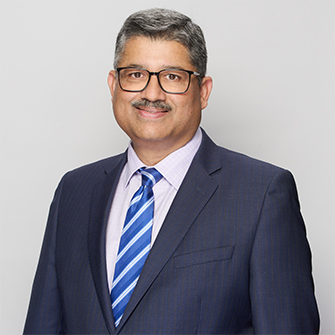
Nose Job Before and After Results
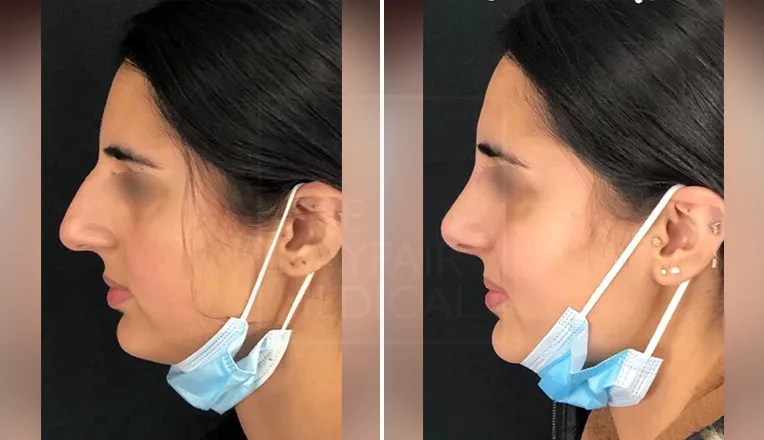
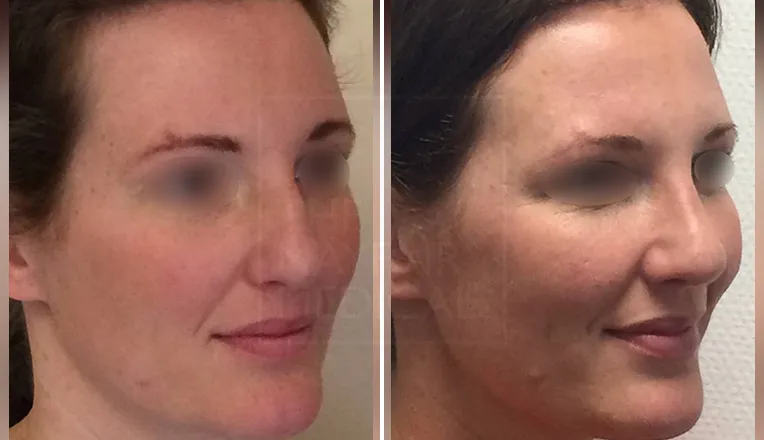
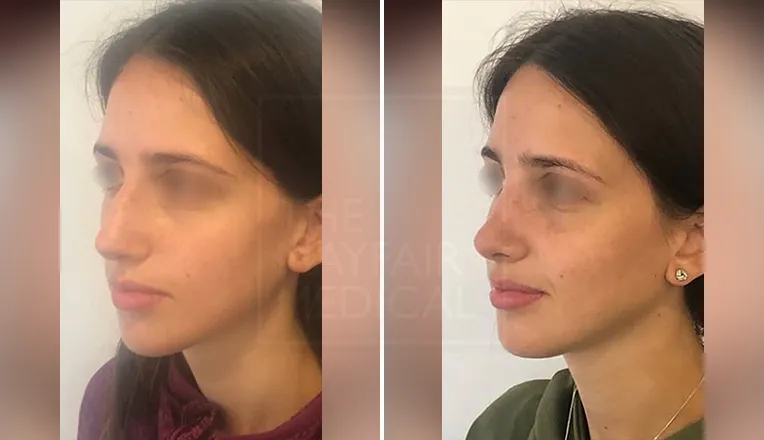
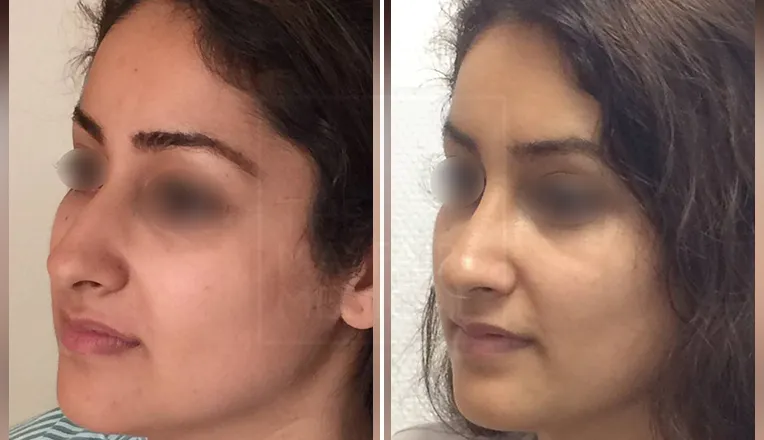
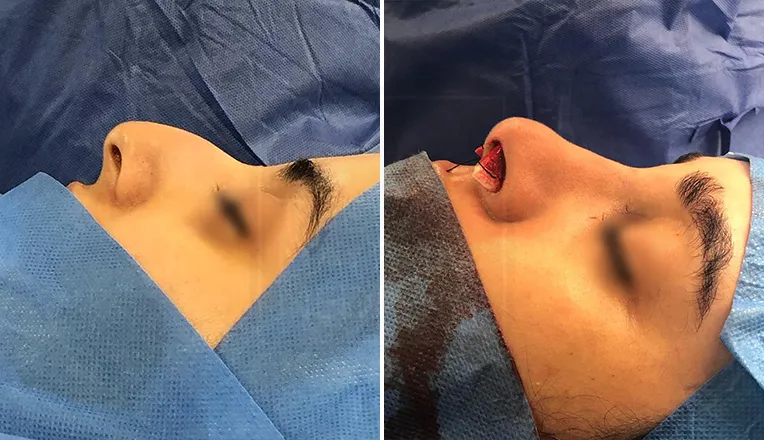
To explore more patients results click here to access our Rhinoplasty Before and After Gallery
Frequently Asked Questions
Cost and Financing FAQs
How much is rhinoplasty in uk?
On average, rhinoplasty costs in the UK may be anywhere between £5,000 to £10,000 or more. It may vary as several factors influence the cost such as the surgeon’s expertise, the location of the clinic, the complexity of the procedure, and the specific goals of the patient.
It is essential to schedule a consultation with the surgeon to get an accurate and personalized quote based on your individual case and desired outcomes.
How much does rhinoplasty cost in London?
Rhinoplasty costs in London may range from £5,000 to £10,000 or more. The cost of rhinoplasty in London can vary depending on several factors, including the surgeon’s experience and expertise, the location of the clinic, the complexity of the procedure, and your specific goals.
At The Mayfair Medical clinic in London rhinoplasty prices start from £5900. With flexible finance options you have a choice to spread the costs of your surgery between 12, 24, 36, 48 or 60 months with a £500 deposit or without deposit.
Pre-Operative FAQs
Am I a good candidate for rhinoplasty(nose job)?
Is rhinoplasty safe?
Rhinoplasty is generally considered safe when performed by a qualified and experienced surgeon in an accredited medical facility. Like any surgical procedure, there are potential risks and complications associated with rhinoplasty, but they are relatively rare.
Choosing a board-certified plastic surgeon or a specialist in facial plastic surgery can significantly reduce the risks and increase the likelihood of a successful outcome. It is essential to have a thorough consultation with the surgeon, discuss your medical history, and understand the potential risks and benefits before deciding to undergo rhinoplasty.
What age can you get a nose job?
Can rhinoplasty improve my breathing?
Can I get a nose job on the NHS?
In the UK, getting a nose job on the NHS (National Health Service) is generally limited to cases where there is a medical need, such as correcting breathing difficulties or addressing significant deformities due to injury or congenital conditions.
Cosmetic rhinoplasty, done purely for aesthetic reasons, is usually not covered by the NHS, and patients would need to seek private healthcare options to undergo the procedure.
What happens during a rhinoplasty consultation?
How long does liquid rhinoplasty last?
The results of liquid rhinoplasty, also known as non-surgical rhinoplasty or non-surgical nose job, are temporary. Typically, the effects can last anywhere from 6 months to 2 years, depending on the type of dermal fillers used and individual factors. Over time, the fillers gradually break down and are naturally absorbed by the body.
To maintain the results, periodic touch-up treatments are usually required. Liquid rhinoplasty is an attractive option for individuals seeking temporary improvements to their nasal appearance without the downtime associated with traditional surgical rhinoplasty.
Post Op and Recovery FAQs
How long is the recovery period after rhinoplasty?
Will there be visible scars after rhinoplasty?
Are the results of rhinoplasty permanent?
Are there any risks or complications associated with rhinoplasty?
How long does rhinoplasty take to heal?
The healing process after rhinoplasty (nose job), can vary from person to person. In general, the initial recovery period lasts about 1 to 2 weeks, during which patients may experience swelling, bruising, and mild discomfort. Most individuals can return to non-strenuous activities within a week but should avoid vigorous physical activities for several weeks.
While the majority of swelling subsides within a few months, complete healing and final results can take up to a year or more. Following the surgeon’s post-operative care instructions is crucial for a smooth healing process and to achieve the best possible outcome.
Does rhinoplasty hurt?
Rhinoplasty is typically performed under anesthesia, ensuring that patients do not feel any pain during the surgery. After the procedure, some discomfort and mild pain may be experienced, but this can be managed with prescribed pain medications.
The level of pain or discomfort varies among individuals, and most patients find that any discomfort gradually improves in the days following surgery.
How long can you fly after rhinoplasty?
The timing for flying after rhinoplasty can vary depending on the individual and the surgeon’s recommendations. In general, most surgeons advise avoiding air travel for at least one to two weeks after rhinoplasty to allow for initial healing and to reduce the risk of complications.
Flying too soon after surgery may increase the risk of swelling and discomfort due to changes in air pressure. It’s crucial to follow your surgeon’s post-operative instructions and seek their approval before making any travel plans to ensure a safe and smooth recovery process.
How many days for rhinoplasty recovery?
The initial recovery period after rhinoplasty (nose job), typically lasts about 1 to 2 weeks. During this time, patients may experience swelling, bruising, and mild discomfort. Most individuals can return to non-strenuous activities within a week, but it is essential to avoid vigorous physical activities for several weeks.
While the majority of swelling subsides within a few months, complete healing and final results can take up to a year or more. Following the surgeon’s post-operative care instructions is crucial for a smooth healing process and to achieve the best possible outcome.
What to expect 3 weeks after rhinoplasty?
Three weeks after rhinoplasty, you can expect a significant reduction in swelling and bruising compared to the initial weeks of recovery. Breathing should start to feel easier as the nasal passages heal. However, some residual swelling may persist, and the final results are not fully evident at this stage.
You should continue to follow your surgeon’s post-operative instructions, avoid strenuous activities, and be patient, as complete healing and the full refinement of the nose may take several months.
